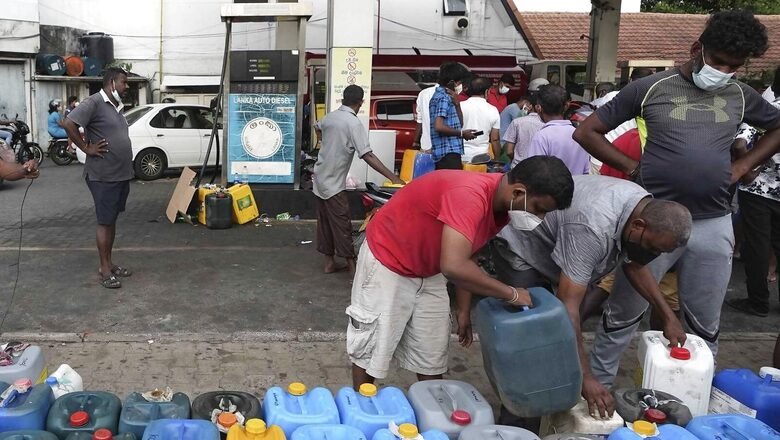
views
As the economic crisis worsened in Sri Lanka on Monday, protesters in the country’s largest city Colombo held numerous small, peaceful demonstrations, defying a nationwide curfew, while police used tear gas to disperse student protesters in the central city of Kandy.
The neighbouring country is facing its worst economic crisis since 1948, when it gained independence, which left it on the verge of bankruptcy. President Gotabaya Rajapaksa has had to declare a state of emergency as the nation grapples with rising prices, shortages of essentials and rolling power cuts. The government also implemented a countrywide curfew after protests turned violent.
A combination of historically weak government finances, badly timed tax cuts and the Covid-19 pandemic, which hit the country’s lucrative tourism industry and foreign remittances, have wreaked havoc on Sri Lanka’s economy. Here’s a timeline of events that led to the current crisis.
Pandemic in 2020
While the sweeping tax cuts announced by Rajapaksa caused a credit rating downgrade in 2020, it was the Covid-19 pandemic in March that year which made matters worse for the island nation. The tourism industry went into major losses and the credit ratings agencies moved to downgrade Sri Lanka and locked it out of international capital markets. The country also witnessed a steep decline in the exports of tea and rubber due to lower demand.
As a result Sri Lankan GDP declined by 3.5 per cent, the Current Account Deficit came down to 7.9 per cent of GDP, and the fiscal deficit reached to 11.1 percent.
April 2021
On April 29 last year, the Lankan government banned the import of chemical fertilisers and other agrochemicals in an attempt to make the country the first in the world to practice “organic-only” agriculture. While the move was aimed at reducing pressure on forex reserves, the experts criticised it, terming it “unscientific” and saying that such drastic policy shift would lead to a steep drop in yield.
Rajapaksa, however, claimed that the decision would help save around $200 million incurred on importing agrochemicals.
November 2021
By November, it became clear that the decision had backfired and there was a drop in the agricultural output. The government, facing protests, then said that it would lift the ban partially.
The recover, however, from the damage already done, was not easy. In a report published by The Week, Saman Dharmakeerthi, professor of soil fertility and plant nutrition at the University of Peradeniya in Kandy, said that the ban led to a reduction in yield, which went down by 25 per cent. Tea cultivation, which is one of the mainstays of the economy, was also badly hit. The output of pepper, cinnamon and vegetables went down by 30 per cent, Firstpost reported.
The immediate result of this was that the country become more dependent on foreign countries for rice and other staples.
Feb 2022
The year-on-year inflation of the food category increased to 24.7 per cent in February 2022 from 24.4 per cent in January 2022, and that of the non-food group rose to 11 per cent in February 2022 from 10.2 per cent in the previous month. Inflation calculated for January 2022 was 16.8 per cent. The higher inflation for the month of February 2022 was mainly due to the higher price levels in both food and non-food categories.
March 2022
By the end of March this year, due to lack of critical foreign currency, the situation became so severe that the country failed to pay for vital imports, leading to shortages in everything from life-saving medicines to cement. As a result, the government announced nationwide 13-hour daily power cuts.
The foreign exchange reserves stood at a paltry $2.31 billion and the country struggled to pay for critical imports including fuel, food and medicines.The government said it will approach the International Monetary Fund (IMF) on a plan to help as a foreign exchange shortage has squeezed essential imports amid looming debt payments.
April 2022
The crisis forced a currency devaluation and hit payments for essential imports such as food, medicine and fuel. Sri Lanka announced that the overall rate of inflation for February 2022 stood at 17.5 per cent, the highest since 2015.
The immediate ripple effect of inflation was witnessed as Sri Lanka posted soldiers at hundreds of state-run gas stations to help distribute fuel after a sudden rise in prices of key commodities and accompanying shortages forced tens of thousands of people to queue for hours.
Read the Latest News and Breaking News here

















Comments
0 comment